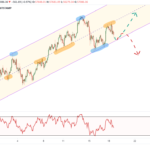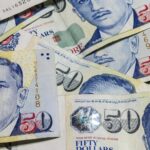 Gold retained its previous daily gains and advanced further as several key U.S. economic indicators showed controversial readings. Increased physical demand kept supporting prices while concern of an earlier-than-expected Quantitative Easing deceleration still weighed.
Gold retained its previous daily gains and advanced further as several key U.S. economic indicators showed controversial readings. Increased physical demand kept supporting prices while concern of an earlier-than-expected Quantitative Easing deceleration still weighed.
On the Comex division of the New York Mercantile Exchange, gold futures for August delivery traded at $1 257.85 per troy ounce at 14:24 GMT, up 1.16% on the day. Prices held in range between days high and low of $1 258.95 and $1 236.05 respectively. The precious metal has advanced more than 1.80% so far this week after it settled 4.77% lower last week and 6.80% the preceding one.
Several U.S. economic indicators were released today showing controversial readings. Payroll processor ADP said the U.S. private sector created 188 00 jobs in June, above projections of 166 000 and Mays revised reading of 134 000. Meanwhile, the U.S. Department of Labor reported that Initial Jobless Claims fell more than expected. People who filed for unemployment assistance during the week ending June 28 stood at 343 000, 2 000 less than the 345 000 forecast and below the preceding weeks revised reading of 348 000.
The employment data, which was a positive sign for Fridays Unemployment Rate and Non-Farm Payrolls, was offset by the countrys Trade Account deficit figure, which mismatched expectations by almost $5 billion. During May, the U.S. Trade Balance deficit widened to $45.027 billion, well above Aprils revised reading of $40.149 billion and expectations for a narrowing to $40.100 billion.
Meanwhile, the ISM Non-Manufacturing Composite also disappointed, marking a lower reading compared to the previous month, while expectations were for an increase. The indicator for June stood at 52.2, well below 53.7 in May and failing to meet projections for a rise to 54.
Mixed U.S. data and Canadas narrowing Trade Account deficit pressured the dollar, which is used for gold pricing. The dollar index, which measures the greenbacks performance against its major counterparts, traded at 83.54 at 14:08 GMT, down 0.32% on the day. The dollar tends to trade inversely to gold. Weakening of the currency boosts commodities appeal as an alternative investment and makes them cheaper for foreign currency holders. Mixed U.S. data failed to support Feds intentions to taper its monetary easing program and allowed the precious metal to extend positions. The future of Quantitative Easing has been one of the main factors to determine the greenback’s strength. Ben Bernanke, Fed chairman, announced after the latest FOMC meeting that the central bank won’t scale down its monetary easing program just yet, but that is highly possible to happen within the end of the year, if the needed stable recovery signs are provided. According to Bernanke, Fed’s moves are tied to what happens in the economy and the central bank has no fixed plan.
Gold prices were also supported as Europes debt crisis and escalating tension in Egypt spurred demand for the metal as a safe haven for wealth preservation. Political tension in Italy arose as a coalition partner of Prime Minister Enrico Letta threatened to withdraw support. Two Portuguese ministers resigned, including Portugal’s Finance Minister, Vitor Gaspar, as data showed the country’s budget deficit widened during the first quarter. Borrowing costs in Spain and Italy surged. Meanwhile, Egypts President, Mohamed Mursi, said in a TV statement he was democratically elected and that he will stand at his position, defying the Egyptian armys ultimatum.
Carlos Perez-Santalla, a New York-based broker at Marex North America LLC said for Bloomberg: “Europe’s debt struggle is back in the forefront, and that is bringing some people to gold as a safety net. Some speculators are moving to gold because of the situation in Egypt.”
Investors are now looking ahead into Fridays key Unemployment Rate and Change in Non-Farm Payrolls indicators, which will provide further information on the pace the U.S. economy is recovering at. Preliminary estimates suggest a 0.1% fall in the Unemployment Rate, 7.5% down from 7.6%. Change in Non-Farm Payrolls are expected to stand at 165 000, down from 175 000 in May.





